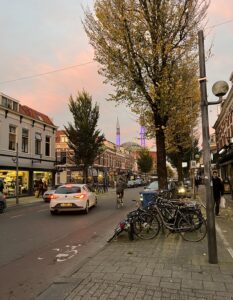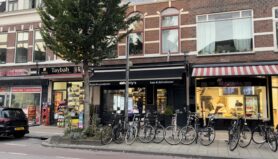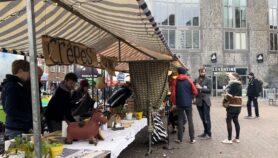News
A global sense of place in Lombok through the lens of food
Student assistant Emilia Seidl (University College Utrecht) wrote the following blog post about understanding the neighbourhood Lombok, in which the preliminary research of the MIGFOODCITY takes place, through the lens of food and the work of geographer Doreen Massey
When thinking of the most diverse neighborhood in Utrecht, the area Lombok directly comes to mind. This diversity can be understood and studied through food, as a mix of global and local food practices make up a vital element of the neighborhood, especially in the neighborhood’s main shopping street, the Kanaalstraat.

Located in the West of the city, Lombok was initially built as a typical working-class district and witnessed multiple migration waves. At the same time, due to the multicultural ambience and the proximity to the center and to the central station, Lombok has become a popular place to live amongst members of the middle-class, accelerating the process of gentrification in the area.
In a video documentary assignment for the course Introduction to Human Geography at University College Utrecht, my group and I linked these local but simultaneously global foodscapes to the writings of feminist geographer Doreen Massey. Massey regards places through a relational and global sense of place. She argues that places should be seen as nodes in continuously evolving social relations, which makes them dynamic and ever-changing (Massey, 1991). Due to globalization, each place is connected to global networks and flows in a particular way. This allows places to develop their uniqueness (Massey, 1991). This type of relational sense of place is easy to recognize in Lombok because the area is connected to the “global” through migration flows, connections to global production networks of food and their colonial pasts.

In Lombok, we found that Massey’s global sense of place is, in particular, felt through the diverse food practices in the neighborhood. Along the Kanaalstraat, the main street in the area, one encounters restaurants offering dishes from many different cultures as well as multiple international food shops. Ingredients are sourced from all over the world, which connects Lombok to the global production networks of food. This is illustrated by the fact that the residents can have a French croissant for breakfast, a Kebab for lunch, a Dutch oliebol as a snack, and have dinner at the Surinamese restaurant after doing groceries at the Turkish supermarket. In addition, a yearly event, Lombok Food Market, is held in the neighborhood, where food stands offer a high variety of meals, cooked by local entrepreneurs and residents. The population of Lombok and people from other parts of Utrecht come together at the festival to interact and eat with each other.

Foodscapes and the process of migration are thus particularly connected in this neighborhood. It is for this reason that the MIGFOODCITY project takes place in Lombok. The MIGFOODCITY project examines how migrants, through food practices and materialities, produce and negotiate the nature of, and encounters in, public spaces in cities and what role urban food practices play in everyday integration and transformation processes of migrants in cities.
Reference:
Massey, D. (1991) A global sense of place. Marxism Today, June, pp. 24-29.

